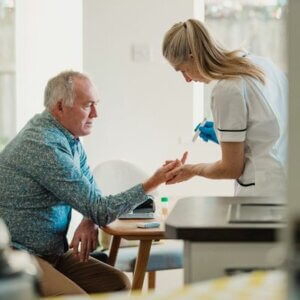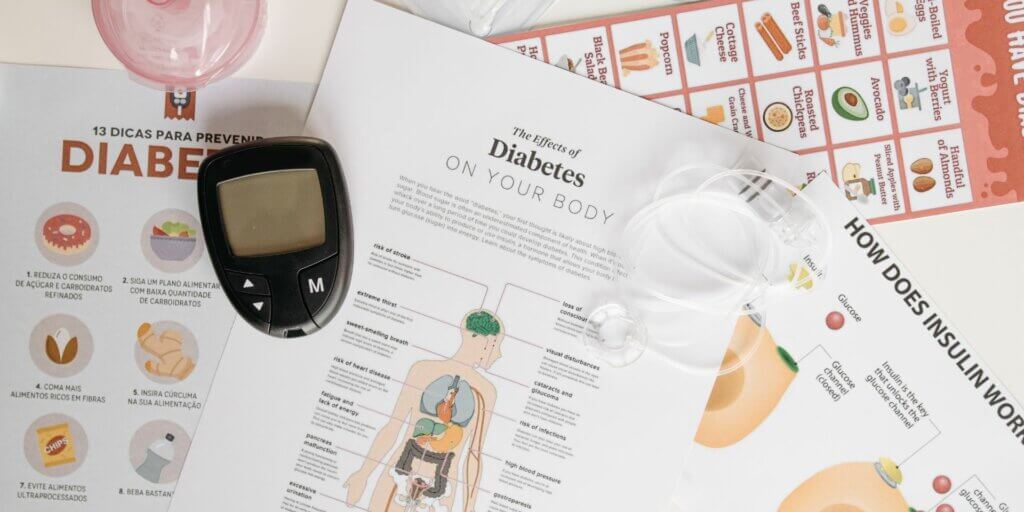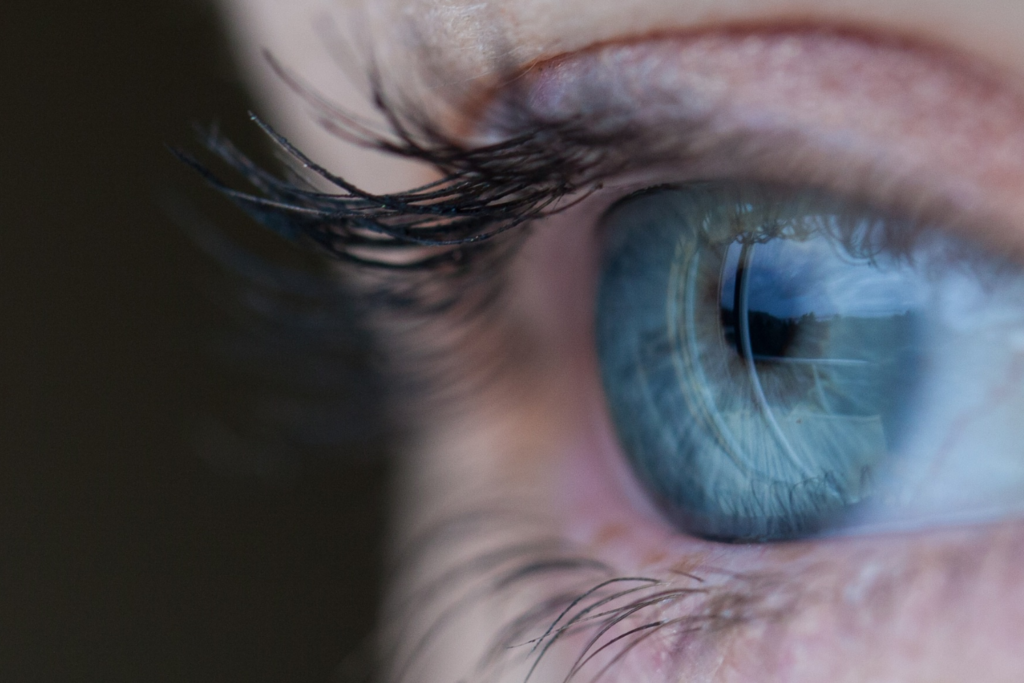Diabetic retinopathy is one of the main eye diseases associated with diabetic eye disease. Its prevalence in the United States is expected to double between 2010 to 2050, jumping from 7.7 million to an estimated 14.6 million. With these projections, it’s more important than ever to stay on top of your annual comprehensive eye exams so you can get treatment as soon as possible.
To answer your frequently asked questions about diabetic retinopathy, we’ll look at:
- What is diabetic retinopathy
- What causes diabetic retinopathy
- Are there different types of diabetic retinopathy
- How can diabetic retinopathy affect vision
- Is diabetic retinopathy the same as macular degeneration
- What is the first sign of diabetic retinopathy
- Can diabetic retinopathy be cured
For the full diabetic retinopathy FAQ, watch our video with Dr. Erik Sweet below!
What Is Diabetic Retinopathy?
Diabetic retinopathy is damage to the retina, which is where the word “retinopathy” comes from, and it’s damage that is due to diabetes or elevated blood sugar. The retina is the innermost layer of the eye and it can only be seen by looking through the pupil with a special lens. It’s a highly vascular tissue meaning that there are a lot of blood vessels there that are damaged due to high blood sugar.
Click here to learn more about diabetic eye disease!
What Causes Diabetic Retinopathy?
Essentially high blood sugar is the problem. High levels of sugar in the blood are damaging to your blood vessels, your arteries, and your veins — especially the small ones known as the capillaries. The small blood vessels in the body are especially prone to this. Damage to these vessels causes leaking as well as makes them unable to bring the blood supply to the organ they’re supplying it to, which in this case is the eye, as well as they normally would.
This is the same problem that causes diabetics to have neuropathy, which is nerve damage often seen in the feet, as well as kidney disease. These are all vessel damage to the small vessels from diabetes.
Are There Different Types of Diabetic Retinopathy?
Yes, there are actually two main types or categories of diabetic retinopathy. The earliest form is called non-proliferative diabetic retinopathy (NPDR) and this is associated with spots of blood across the retina. There are also three main stages of this.
This may also be associated with macular edema — the macula being the most important part of the retina where your central vision is handled. In addition, there can be something called macular ischemia. Ischemia is a lack of blood supply or damage due to low blood flow to the area. Both of these can be associated with this non-proliferative diabetic retinopathy.
What’s considered the more severe form of diabetic retinopathy is proliferative diabetic retinopathy. What distinguishes the two is the presence of abnormal blood vessels. In the proliferative form, the tissues of the eye are starved for oxygen and they send out signals to ask for help, and in response, the body grows abnormal blood vessels.
Unfortunately, rather than helping, those vessels can lead to significant problems. These problems can lead to:
- Retinal detachments
- Severe pooling of blood inside the gel of the eye
- Sudden onset of glaucoma leading to permanent vision loss
The complications of proliferative diabetic retinopathy can be quite profound and even irreversible.
How Can Diabetic Retinopathy Affect Vision?
This goes back to the different stages of diabetic retinopathy. Whether there are vision changes depends on the stage. Early diabetic retinopathy often doesn’t have any symptoms so even mild to moderate and even severe cases can be detected and seen when a patient really has no vision complaints.
In some cases the vision complaints are vague. People will say that their vision is blurry, that they don’t see as well as they used to, or that their glasses aren’t working well anymore. Other times symptoms are more specific. You can have certain spots in your vision or sudden vision loss from glaucoma or a really bad bleed inside the eye.
This is part of the importance of getting an annual dilated eye exam with an ophthalmologist. A lot of times there are signs inside the eye before there are profound symptoms and these exams help us find them.
To read our complete guide to comprehensive eye exams, click here!
Is Diabetic Retinopathy the Same as Macular Degeneration?
The answer is “no.” Both of these diseases affect the retina with macular degeneration affecting the macula and it’s a degeneration of the macula. Diabetes can be seen as damage to the macula but it’s different. Macular degeneration often refers to age-related macular degeneration, which is unrelated to diabetes.
Diabetes is not a risk factor for age-related macular degeneration. On the other hand, risk factors include:
- Aging
- Genetics
- Environmental exposure
Macular degeneration is seen in diabetics and non-diabetics alike. Similarly, you can have both diabetic retinopathy and macular degeneration but they are not the same thing. They can occur together or separately due to having different processes and risk factors.
Click here to watch our video with Dr. Adam Carrera as he answers your questions about age-related macular degeneration!
What Is the First Sign of Diabetic Retinopathy?
The first sign would be small spots of blood inside the retina. They can actually be difficult to see since they can be well under a millimeter in size that is seen in the back of the eye. They are the first major warning sign that diabetes is starting to affect your vision. You want a competent ophthalmologist evaluating you who can see them.
Our eye surgeons are the best in Knoxville and the surrounding East Tennessee area. Click here to book your appointment!
Can Diabetic Retinopathy Be Cured?
In many cases, damage from diabetic retinopathy to the eyes can be reversed or halted. Unfortunately, it’s not generally cured. Diabetes that has progressed enough to reach the eyes is rarely cured.
There are circumstances where somebody may have really poorly controlled diabetes for a long period of time that is left untreated and is brought under aggressive control. After that, the diabetic changes can go away and never be seen again.
Do you need treatment for diabetic retinopathy in Knoxville, TN? Contact us today to schedule your appointment!
Diabetic retinopathy damages the retina, the innermost layer of the eye. It’s caused by elevated blood sugar and comes in two forms. Symptoms can be vague and even go undetected in the severe stages. While they can occur together, diabetic retinopathy should not be confused with macular degeneration. The first sign of the condition is blood inside the retina. While rarely curable, diabetic retinopathy can be halted or even reversed with early treatment.
Baptist Eye Surgeons is an ophthalmological practice in Knoxville, TN, and Morristown, TN. Give us a call at 865-579-3920 for more information or to schedule an appointment.






